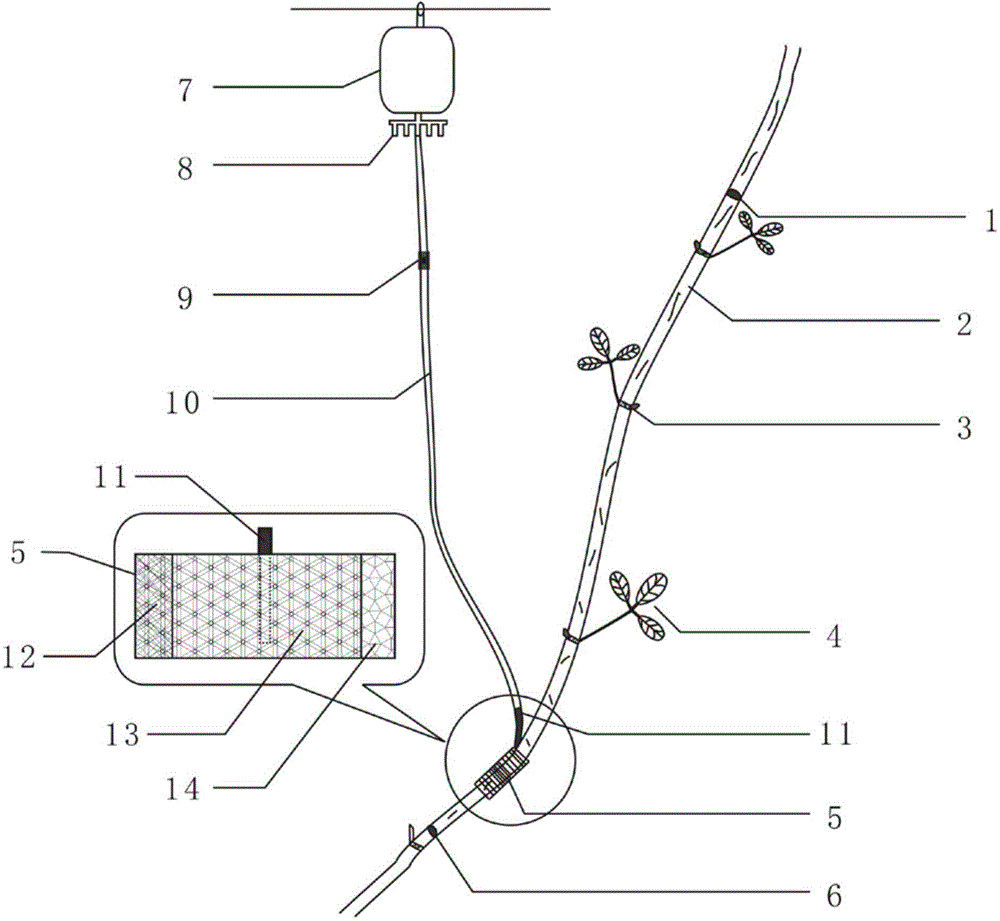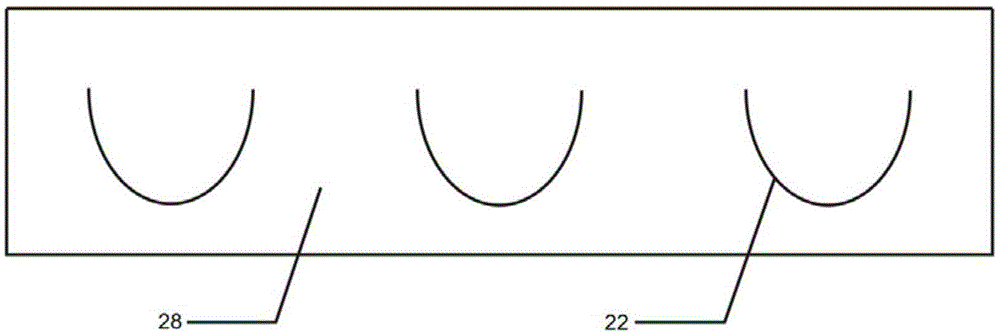A method for propagating Akebia trifoliata
A technology of clover and cuttings, which is applied in the fields of botanical equipment and methods, horticulture, and application, can solve the problems of poor reproducibility of results, small reproduction coefficient, and high reproduction coefficient, and achieves the utilization rate of female parent plants. Improve, promote rooting and germination, the effect of stable technical indicators
- Summary
- Abstract
- Description
- Claims
- Application Information
AI Technical Summary
Problems solved by technology
Method used
Image
Examples
Embodiment 1
[0039] A method for propagating Akebia trifoliata, comprising two stages of cutting female plant cultivation and cutting seedbed cultivation, specifically divided into the following steps:
[0040] (1) selection of female parent plant
[0041] According to the growth situation of the plant, select a plant with vigorous growth, luxuriant branches and leaves, strong cane, and 2-3 years old as the female parent plant cultivated by cuttings of Akebia trifoliata;
[0042] (2) Determination of cutting culture unit and formation of incision
[0043]Three days before and after the Lunar Rain Festival in that year, according to the density of the internodes of the cane of the female parent plant, the stem sections of the cuttings to be cultivated are marked for the location of the cutting cultivation unit. The 2-3 nodes are a cutting cultivation unit; The part between the upper end 1 of the positioning mark of the cultivation unit and the lower end 6 of the positioning mark of a cutti...
Embodiment 2
[0065] The technical solution of the present invention is a method for raising seedlings by cuttings of Akebia trifoliata, comprising two stages of cutting female plant cultivation and cuttings seedbed cultivation, which are specifically divided into the following steps:
[0066] (1) selection of female parent plant
[0067] According to the growth situation of the plants in the previous year, the plants with vigorous growth, luxuriant branches and leaves, strong cane stems, and 2-3 years old were selected as the female parent plants cultivated by cuttings of Akebia trifoliata.
[0068] (2) Determination of cutting culture unit and formation of incision
[0069] Three days before and after the Lunar Rain Festival in that year, according to the density of the internodes of the cane of the female parent plant, the stem sections of the cuttings to be cultivated were marked for the location of the cutting cultivation unit, and the 2-3 nodes were a cutting cultivation unit. The pa...
Embodiment 3
[0091]In 2013, 20 2-3-year-old female plants were screened, and 218 cuttage cultivation units were marked on February 17, 2014, and 1-4cm at the base of the bottom stem node of each cutting cultivation unit. Cut 3 small upside-down moon-shaped incisions in the phloem on the same horizontal plane, with a distance of 0.35 cm between each other, and put a callus induction ring on it. The induction solution used between February 17 and March 2 was 6-BA0 .5mg / L+NAA0.25mg / L, the callus induction rate was counted on March 2; the induction solution formula used between March 3 and March 17 was 6-BA0.5mg / L+NAA5.0mg / L, the induction rate of root primordium was counted on March 17; the cultivation was continued for 15 days (from March 18 to April 1), and the new root protrusion point reached 98% on April 2. At the same time, the cutting strips were cut and the seedbed cuttings were carried out simultaneously on April 2, with the row spacing of 33×40cm / plant.
[0092] Choose a hillside ...
PUM
 Login to View More
Login to View More Abstract
Description
Claims
Application Information
 Login to View More
Login to View More - R&D
- Intellectual Property
- Life Sciences
- Materials
- Tech Scout
- Unparalleled Data Quality
- Higher Quality Content
- 60% Fewer Hallucinations
Browse by: Latest US Patents, China's latest patents, Technical Efficacy Thesaurus, Application Domain, Technology Topic, Popular Technical Reports.
© 2025 PatSnap. All rights reserved.Legal|Privacy policy|Modern Slavery Act Transparency Statement|Sitemap|About US| Contact US: help@patsnap.com



